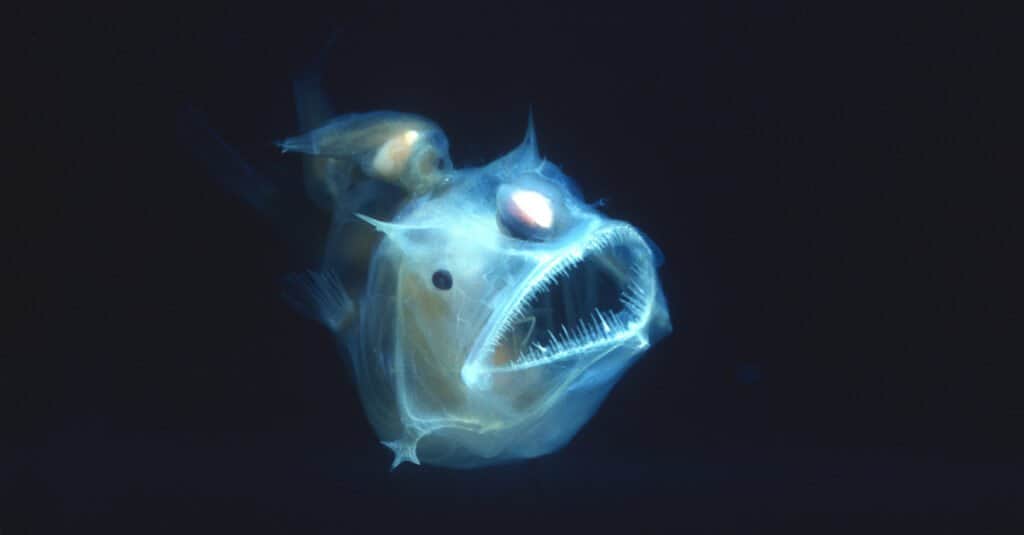Communication is necessary for all animal species, though it might not look familiar in every type of animal. For mammals and other land-dwelling animals, body language and sounds are important ways of warning about predators, pointing out food spots, or indicating an interest in mating. These are also necessary ways fish communicate with each other. Here you’ll find the most common means of fish communication and what they’re trying to say with their movements, even the ones we can’t see.
1. Motion and Gestures

Fish will dance or move in a particular fashion to convey messages to each other.
©Juliane Lukas, CC BY-SA 4.0, via Wikimedia Commons – 22 December 2021 – https://www.eurekalert.org/multimedia/902190 – License
A very common and obvious method of fish communication is motion or other visual stimuli. Male fish might “dance” to entice females to mate. More commonly, fish moving in schools protect the majority from predators, and the synchronicity in their movements can also help confuse predators. While there is still a lot to uncover about schooling behavior in fish, there are a few factors that we understand.
For example, schooling fish use pressure sensitivity to communicate, which is fairly complex but also seems effortless. Fish are very sensitive to pressure changes in their environment. The shifting of water around the fish’s body tells them where to move and how fast to get there. By looking around at their fellow “school mates” fish can also figure out what the next move might be. This phenomenon is very impressive!
2. Bioluminescence and Color

Angler fish use the light above their heads to attract prey into their mouths.
©Neil Bromhall/Shutterstock.com
Bioluminescence and color are signals to other fish. In the case of bioluminescence, some creatures like angler fish or viperfish, use lighted appendages to encourage prey to come within striking distance. Other fish, like lanternfish, use their bioluminescence to deter or confuse predators. Most fish’s sight is dependent upon contrast and brightness rather than color, so bioluminescence or light-bearing organs can very easily throw off a predator.
Bioluminescence is most important in deep-sea fish. Some fish, like the lanternfish, have lateral photophores, or light-producing organs, which can help others of their kind recognize them from far away. Locating others of the same species is most advantageous for reproducing.
Colors are also utilized well by many different sea creatures. Some fish can change colors rapidly under the influence of hormones. This is most often a response to stress, but it can also be done for the purposes of camouflage. In the case of squids and octopuses, they rapidly change colors and even the texture of their skin to blend into their surroundings. This type of camouflage comes in handy for both evading predators and capturing prey. Color changing behavior can also relay important information. For example, color changes in an octopus can be a display of aggression. This warns others to stay away or risk a fight.
3. Pheromones

Blind fish or fish with poor vision, such as the
moray eel
, rely heavily on smells and other senses.
Chemicals such as pheromones and urine are useful in communicating with other fish. Pheromones are often beneficial for reproductive means. However, they are also helpful in warning others of predators nearby. Parents also use pheromones to recognize their offspring. In the case of fish that move from saltwater to freshwater like salmon, pheromones can also help lead the way.
Pheromones are also released when a fish is under attack, which is another way they can communicate danger. These chemicals warn other fish of that species to stay away from the area. Since these pheromones are observable and quantifiable, they show promise in use for conservation efforts.
4. Sound Waves

Catfish
can create sounds by moving their vertebrae to make vibrations in the water for communicating.
©Alauddin Abbasi/Shutterstock.com
Marine mammals like whales and dolphins use echolocation and “songs” to communicate. Fish, on the other hand, frequently make inaudible sounds using their swim bladder. The vibrations make a drumming-type sound which helps species identify each other. Identifying other members of your species can make mating easier or more likely to occur. Another reason fish would make these vibrations or use sound waves for communication is to warn others of their species of stressful situations.
Fish communicating through sounds or acoustics can also help others locate habitats, such as in the case of reef fish. Some studies indicate that reef fish use acoustic sounds to find their way through their habitats in the dark. They are sensitive and in tune with their environment, utilizing these noises to help them survive and navigate the sea.
The photo featured at the top of this post is © Nuture/iStock via Getty Images
Thank you for reading! Have some feedback for us? Contact the AZ Animals editorial team.






